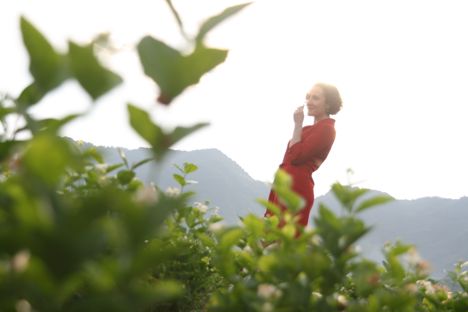
White tea demystified
Black tea may be the most popular, but the sweet, delicate flavour of white tea is starting to get noticed. Henrietta Lovell, also known as the Rare Tea Lady, makes the case for this very special leaf.
White tea demystified
Black tea may be the most popular, but the sweet, delicate flavour of white tea is starting to get noticed. Henrietta Lovell, also known as the Rare Tea Lady, makes the case for this very special leaf.
Many people believe that different tea comes from different plants. But like all wine comes from grapes, all tea comes from the same tea plant – Camellia Sinensis. What gives us the many different types we enjoy is not only down to differing varietals but two key factors: when the leaves are picked and how they are crafted.
The best white tea is sweet, delicious and very delicate. It should be extremely elegant and subtle. In order to supply large volumes, some brands use leaves harvested throughout the year but the finest white tea comes from leaves that are picked for just a few short weeks in the early spring. The most celebrated come from Fuding in the Fujian province of China, which is known as the Champagne region for white tea.
White tea undergoes the least amount of processing; it is simply plucked and dried which allows it to retain the most delicate flavours and the highest amount of health-promoting antioxidants.
It is important when making white tea to use water heated to 70°C to bring out the sweet, grassy notes. This can be achieved by adding 50ml of cold water (around two dessert spoons) per 150ml (a tea cup) into the teapot before adding boiled water. The sweetness is due to amino acids dissolving at lower temperatures whilst higher temperatures bring out the tannins and astringency.
White silver tip
This is the most prized of all white tea. White silver tip contains less tannins and caffeine than other tea and is surprisingly sweet. The plants have not begun to photosynthesise when they are picked, using sugars stored over the winter to produce the first tender tips instead.
White whole leaf
Also known as white peony or Bai Mu Dan in China. The best peony is entirely hand-made from tender spring buds and new leaves. Like white silver tip it has a gentle sweetness, but the open leaves give a deeper flavour and a hint of peach.
Jasmine silver tip
You can make jasmine tea using any leaf and is often made with a cheap black tea that’s been flavoured to disguise the poor quality. For something very special, look out for good quality white silver tip tea that has been scented with fresh jasmine flowers. Originally created as a tribute tea only for the Chinese Emperor, it was forbidden outside the Imperial household. Thankfully we can all enjoy it now and it is truly celestial.
Malawi antlers
There are some extremely rare and delicious white teas grown outside China. My favourite is an incredibly special tea from Malawi made not from the leaves but the velvety stem of finely plucked spring shoots. This tea wonderfully expresses the unique terroir of the tea garden, and only a few kilos can be produced a year. The result is a deeply delicious tea with remarkable apricot and peach flavours.


